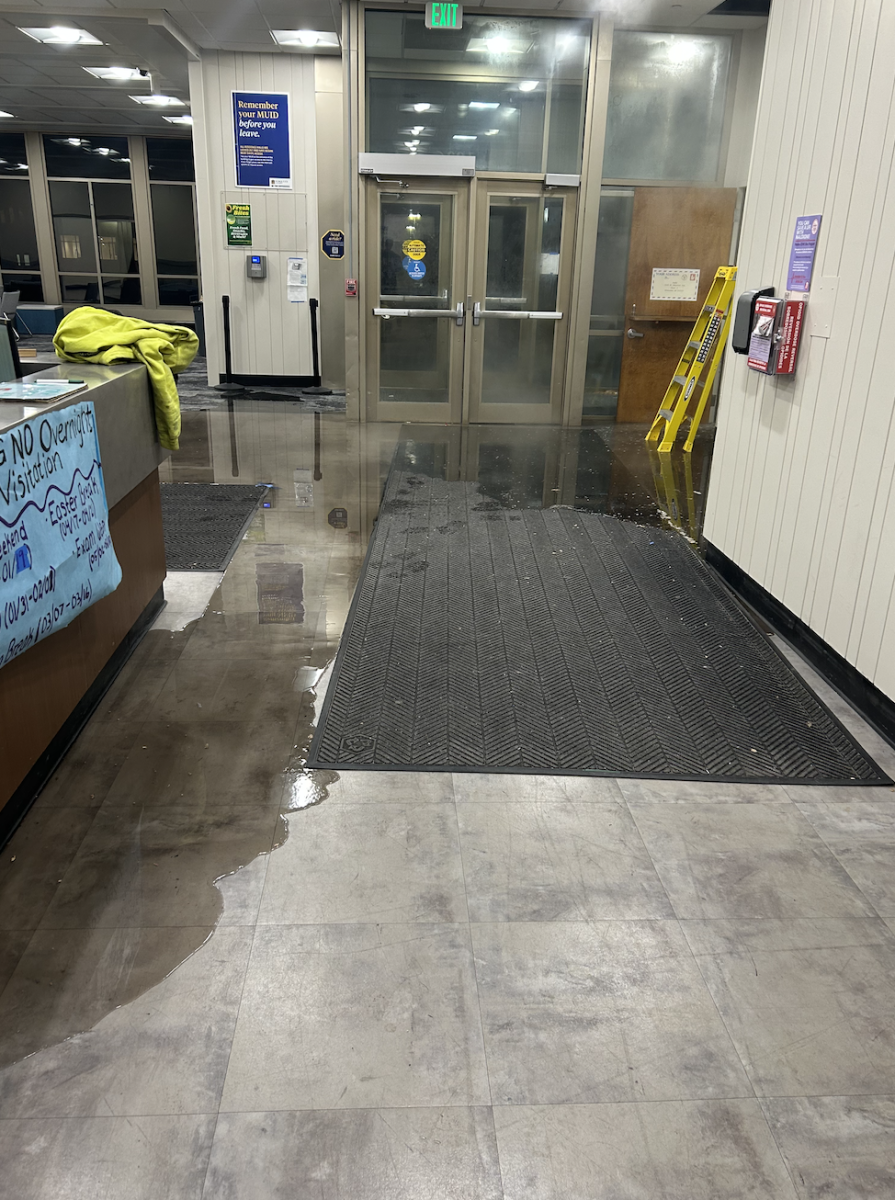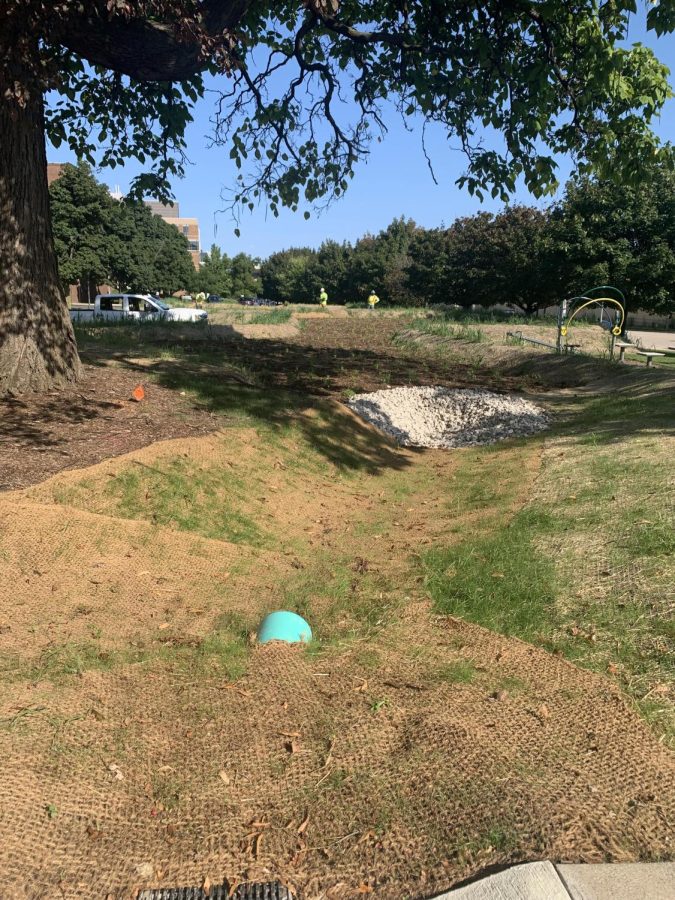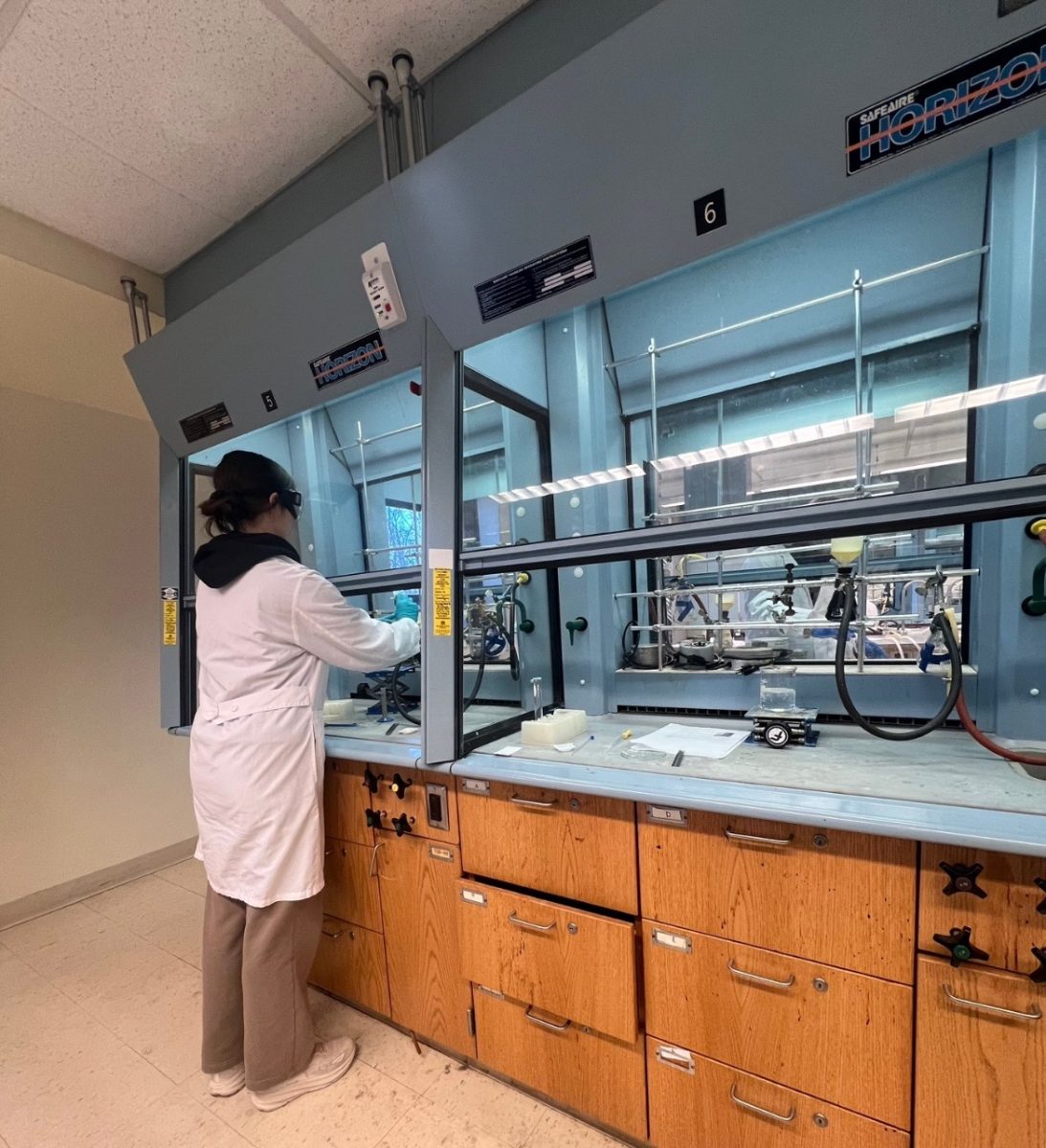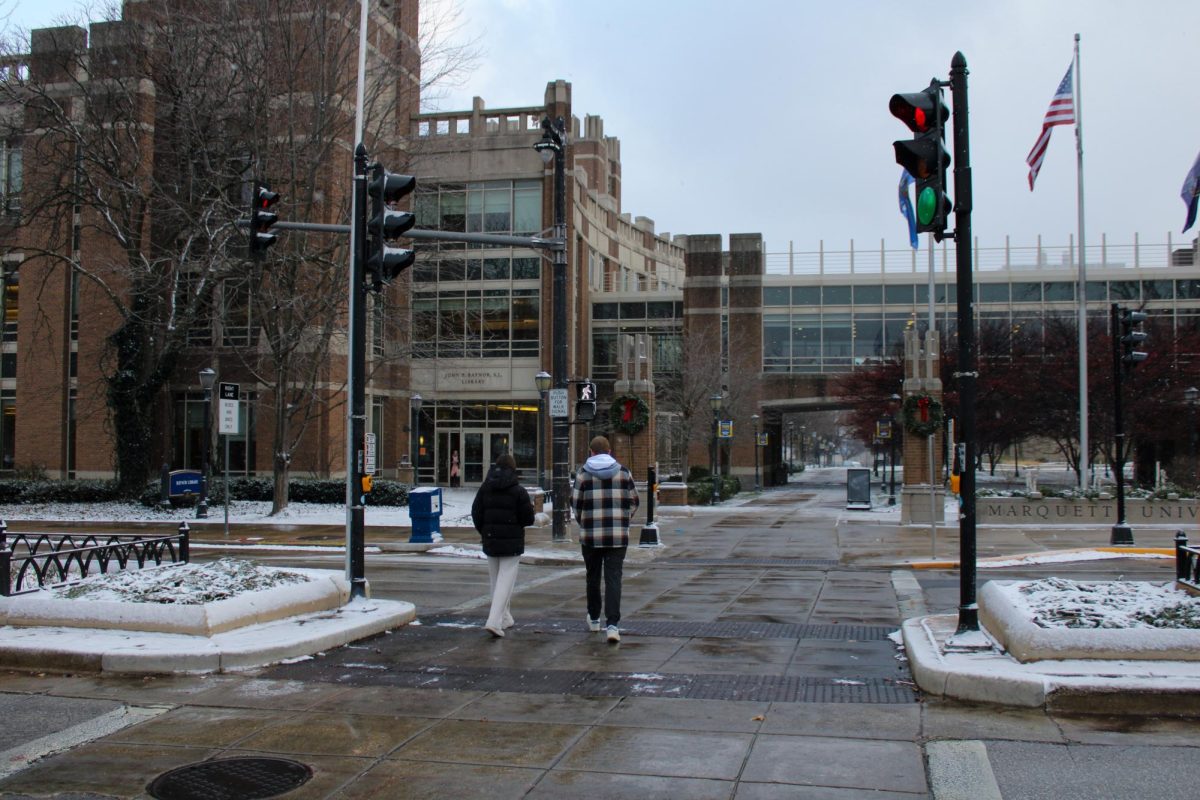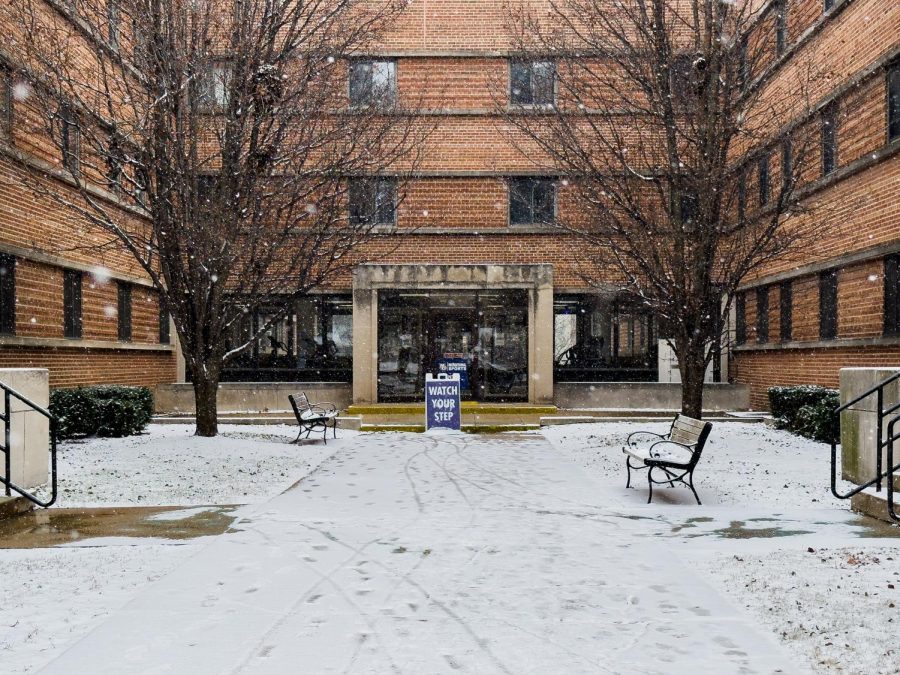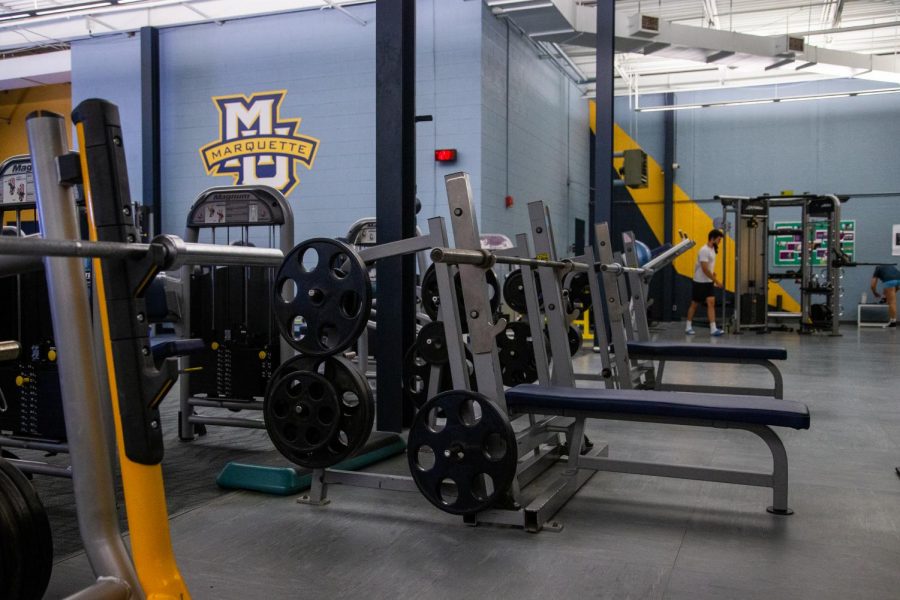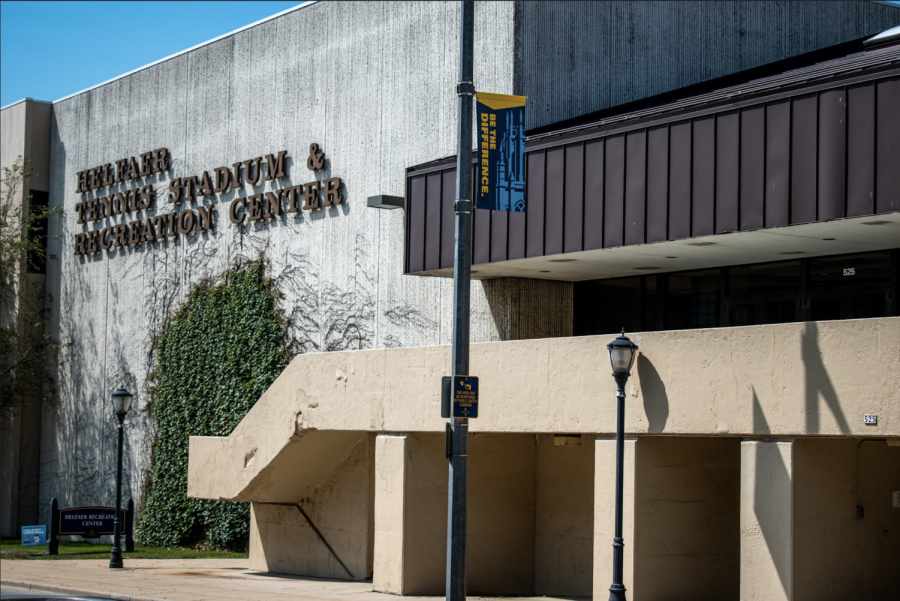
In the wake of massive summer flooding, citywide damage has left both Milwaukee and Marquette working to rebuild.
The worst of the summer storms hit on July 22, when the torrential rainfall broke the daily record with a reported 5.61 inches at General Mitchell International Airport, according to Chris Kuhlman, a meteorologist at the National Weather Service Weather Forecast Office.
The rain grounded flights, seeped into homes and buildings and created a giant sinkhole downtown that swallowed a Cadillac Escalade.
Milwaukee had about $15 million in damage to private and public structures, according to Bill Arnold, the public information manager for the Milwaukee Common Council. He said some of the hardest-hit areas included the 1st, 7th, 2nd, 15th, and 5th aldermanic districts.
“Thousands upon thousands of homes were affected by basement back-ups and flood water,” Arnold said. “Rivers were flowing down streets, and homes were ripped from their foundations. Sewage went into people’s basements and yards because the water had nowhere else to go.”
The Federal Emergency Management Agency announced Aug. 11 that it would provide aid for recovery efforts on both state and local levels, according to the agency’s website. Arnold said FEMA has awarded the money to public entities for damaged infrastructure, such as roads and bridges.
On Aug. 17, FEMA denied Milwaukee county’s plea for federal aid for individuals whose homes were damaged by the flooding, but Wisconsin Gov. Jim Doyle promised to appeal the decision.
“It might happen, we hope,” Arnold said. “The city has not given up the fight to get FEMA to give aid to private individuals.”
Marquette was also hit hard by flooding. Thirty-five campus buildings had water in them in some way, according to Assistant Director of Facilities Services Jerry Kohn. Roughly half of those buildings had sewage and several inches of water on the floor, Kohn said.
Since the flooding, the university has worked with two water restoration contractors to help remove water, sewage-soaked carpet and damaged drywall Kohn said. It also hired a number of construction contractors to replace drywall, as well as painters to paint the walls that were replaced, he said.
Kohn said the buildings that saw the most damage were the Alumni Memorial Union, Coughlin Hall, Cramer Hall, Rec Center, Johnston Hall, Carpenter Tower and O’Donnell Hall.
Ultimately, the university suffered about $100,000 in damage, Kohn said. He said the majority of the renovations have been completed.
In addition to university buildings, many student homes and apartments experienced flood damage.
College of Business Administration junior Leonard Hartanto, who lives in the Montecristo apartment building at 1722 W. Wells St., had his basement apartment flooded by the storms.
“The water covered part of my feet,” Hartanto said. “Luckily, none of my personal belongings were damaged.”


